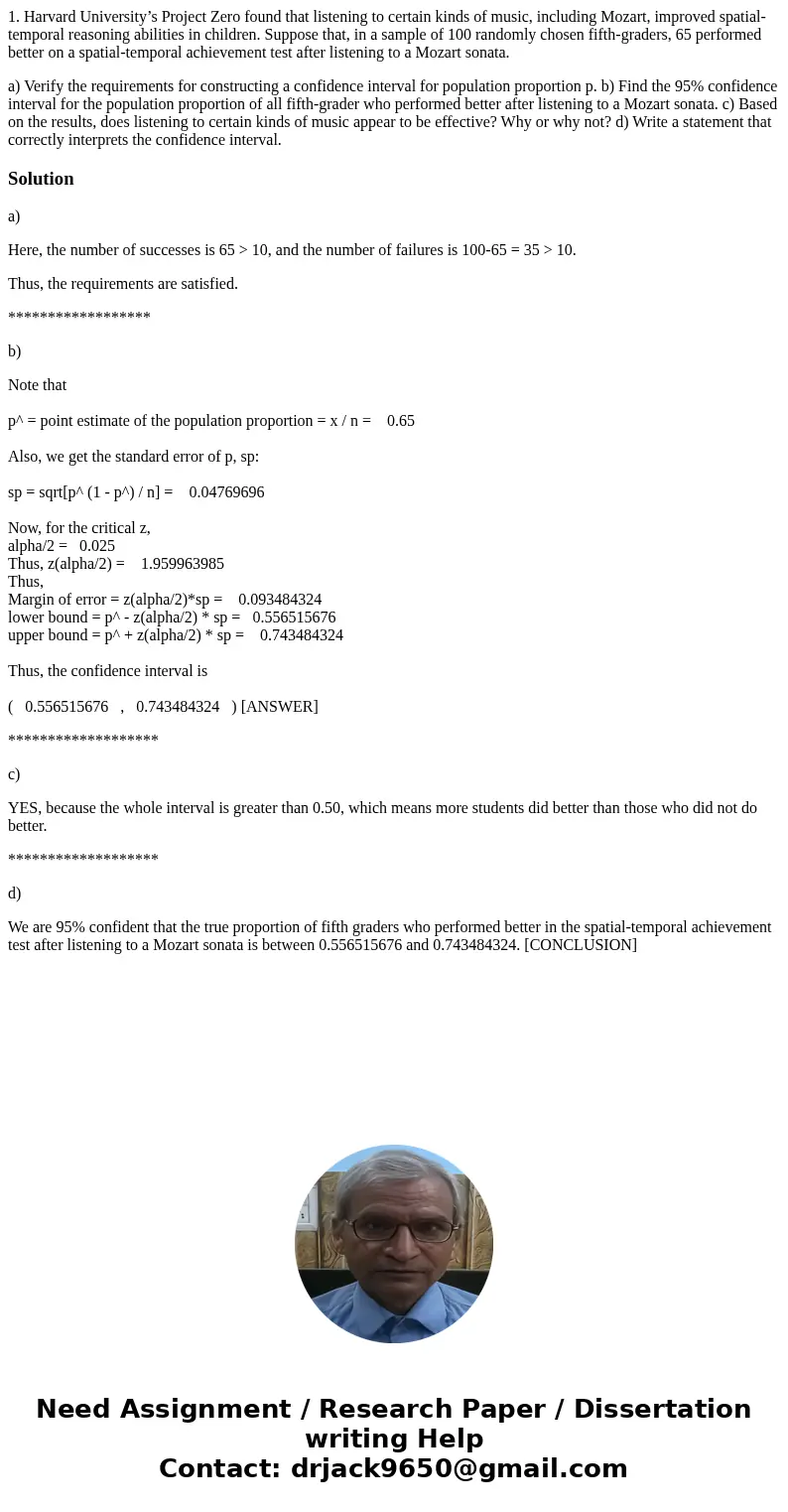1 Harvard Universitys Project Zero found that listening to c
1. Harvard University’s Project Zero found that listening to certain kinds of music, including Mozart, improved spatial-temporal reasoning abilities in children. Suppose that, in a sample of 100 randomly chosen fifth-graders, 65 performed better on a spatial-temporal achievement test after listening to a Mozart sonata.
a) Verify the requirements for constructing a confidence interval for population proportion p. b) Find the 95% confidence interval for the population proportion of all fifth-grader who performed better after listening to a Mozart sonata. c) Based on the results, does listening to certain kinds of music appear to be effective? Why or why not? d) Write a statement that correctly interprets the confidence interval.
Solution
a)
Here, the number of successes is 65 > 10, and the number of failures is 100-65 = 35 > 10.
Thus, the requirements are satisfied.
******************
b)
Note that
p^ = point estimate of the population proportion = x / n = 0.65
Also, we get the standard error of p, sp:
sp = sqrt[p^ (1 - p^) / n] = 0.04769696
Now, for the critical z,
alpha/2 = 0.025
Thus, z(alpha/2) = 1.959963985
Thus,
Margin of error = z(alpha/2)*sp = 0.093484324
lower bound = p^ - z(alpha/2) * sp = 0.556515676
upper bound = p^ + z(alpha/2) * sp = 0.743484324
Thus, the confidence interval is
( 0.556515676 , 0.743484324 ) [ANSWER]
*******************
c)
YES, because the whole interval is greater than 0.50, which means more students did better than those who did not do better.
*******************
d)
We are 95% confident that the true proportion of fifth graders who performed better in the spatial-temporal achievement test after listening to a Mozart sonata is between 0.556515676 and 0.743484324. [CONCLUSION]

 Homework Sourse
Homework Sourse